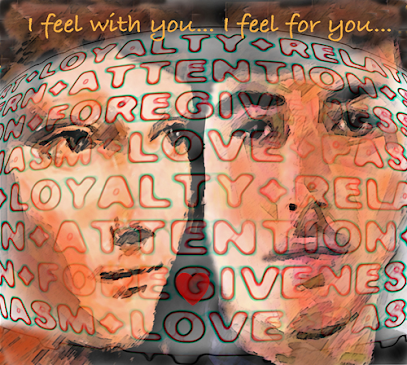Time-out in Nias adhered to its own intricate schema, not simply as an inversion of ordinary life but as a ceremonial recalibration dictated by a rigid codex of commandments. These protocols—supervised by the ancestral dead, spectral custodians manifesting through gaunt figurines perched on roof beams—enforced a ritual segregation termed famongi, or the Placing of Taboos. This period, infused with an incongruous spirit of communal festivity and paradoxical solidarity, sharply contrasted the acrimony presumed endemic to quotidian existence. Outsiders, referred to as “other people,” became objects of dread and contamination, their touch seen as the harbinger of an insidious decline. In-laws—liminal beings straddling the boundary between kinship and alterity—were transformed into agents of potential peril, their affection itself weaponized by the ritual dictates of the lockdown.
Ancestral law, unyielding and omnipresent, governed every aspect of this metaphysical quarantine, its logic suffusing the collective consciousness. Unlike the neurotic compulsions and existential anxieties Freud ascribed to religious ritualism, Nias’s periodic withdrawals into seclusion displayed no hint of repression or hypochondriacal fastidiousness. Here, mortality loomed not as an aberration but as the natural rhythm of existence: half of all children died in infancy, and old age was a rarity. Against this backdrop of endemic hardship, the islanders’ fears were notably circumscribed—a population historically accosted by raiding, slavery, and the brutal incursions of headhunters. Yet, these dangers, violent as they were, remained comprehensible in their boundedness—a grim calculus of loss and vengeance, all within a framework of structured reciprocity.
The periodic lockdowns, rather than serving as a retreat into stasis, functioned as mechanisms of social and cosmic recalibration. They effected a temporary cessation of temporal flux, an ethical suspension imposing a moratorium on transgressions against reciprocity. Within this suspended time, the Niha mania for enumeration came to the fore: each numerical account formed part of an existential ledger—pigs sacrificed, deaths avenged, feasts hosted. Such calculations transcended utility, instead functioning as a form of spiritual calculus, where life and death, far from being mere binaries, became interwoven within a sanguinary equilibrium. The Niha cosmology, wherein every phenomenon—from plagues to earthquakes—possessed both spiritual and material causality, rendered the ritual lockdown not only necessary but potent. Far from being a hollow symbolic gesture or mere aesthetic ritual, it constituted a pragmatic interface between visible and invisible realms.
Clearing disruptions in cosmic balance—whether attributed to ancestral wrath or the gods’ caprices—necessitated lockdown as a means of restitution. It was akin to a metaphysical audit, providing an interlude during which debts were paid, equivalences restored, and exchanges recalibrated, often involving dramatic reductions in usurious interest and recalibration of trade standards. The material realm was not isolated but thoroughly enmeshed with the spiritual; massive ritual slaughters and gold redistribution mirrored this intertwined ontology. Yet, with the advent of missionary Christianity, a stark reconfiguration ensued. The prerogatives of the ancestors yielded to those of a deity whose moral economy operated through the metrics of sin, redemption, and piety. Offenses, once understood as ruptures in reciprocity, were reframed as debts to an abstracted divine order.
Despite this theological upheaval, the Niha penchant for numerical reckoning persisted—now manifesting in frenzied auctions and sin tallies rendered on leaves during church services. Repentance, stripped of its ancestral cosmology, retained its calculative essence, evidencing a continuity underlying dramatic doctrinal shifts. The contrast between traditional Nias’s finite terrors—headhunting and sorcery—and the boundless, amorphous anxieties characterizing the modern world is instructive. Where the Niha framed danger as contained and addressed through reciprocity, contemporary existential crises—typified by the pandemic—appear diffuse and uncontainable. Nonetheless, structural parallels endure: both societies deploy ritual, whether ancestral lockdown or public health measures, to impose order upon chaos, their practices oscillating between the pragmatic and the performative. The Niha worldview, with its cyclical restorations of balance and unflinching acceptance of mortality, offers a poignant counterpoint to contemporary uncertainties surrounding ritual, ethics, and survival.
WORDS TO BE NOTED-
-
Schema
Definition: An organized plan or framework. -
Codex
Definition: An ancient manuscript or code of laws and principles. -
Taboo
Definition: A social or religious custom prohibiting a particular practice or association. -
Liminal
Definition: Existing at or on both sides of a boundary or threshold; in-between. -
Reciprocity
Definition: A mutual exchange of privileges; give-and-take relationships. -
Metaphysical
Definition: Relating to abstract thought or concepts beyond the physical world. -
Enumerate
Definition: To mention separately as if counting; to list one by one. -
Ontology
Definition: The philosophical study of the nature of being, existence, or reality. -
Pragmatic
Definition: Dealing with things sensibly and realistically. -
Transgression
Definition: An act that goes against a law, rule, or code of conduct; a violation.
The passage explores the ritual practice of “time-out” in the culture of Nias, an island society where communal lockdowns (famongi) served as both social and cosmic recalibrations. Governed by strict ancestral commandments and taboos, these periods redefined social boundaries, marked by a heightened fear of outsiders and the ritual transformation of in-laws into potential threats. Unlike modern anxieties or Freudian readings of neurosis, Niha seclusion accepted mortality as a natural part of life, shaping fears that were concrete and bounded, in contrast to today’s diffuse existential uncertainties. Ritual lockdowns in Nias were not mere symbolic gestures but pragmatic tools to restore balance between the material and spiritual worlds, evidenced through acts like sacrificial feasting and recalibrated exchanges. Even after the introduction of Christianity, which reframed spiritual reckoning around sin and redemption, the deep-rooted cultural focus on enumeration and reciprocity endured. Ultimately, the Niha worldview highlights the enduring human impulse to use ritual as a way to manage chaos, restore order, and grapple with the ethical dimensions of survival, offering a striking contrast—and subtle parallel—to modern responses to crises.
SOURCE- INDIA MAGAZINE
WORDS COUNT- 600
F.K SCORE - 15




Comments
Post a Comment